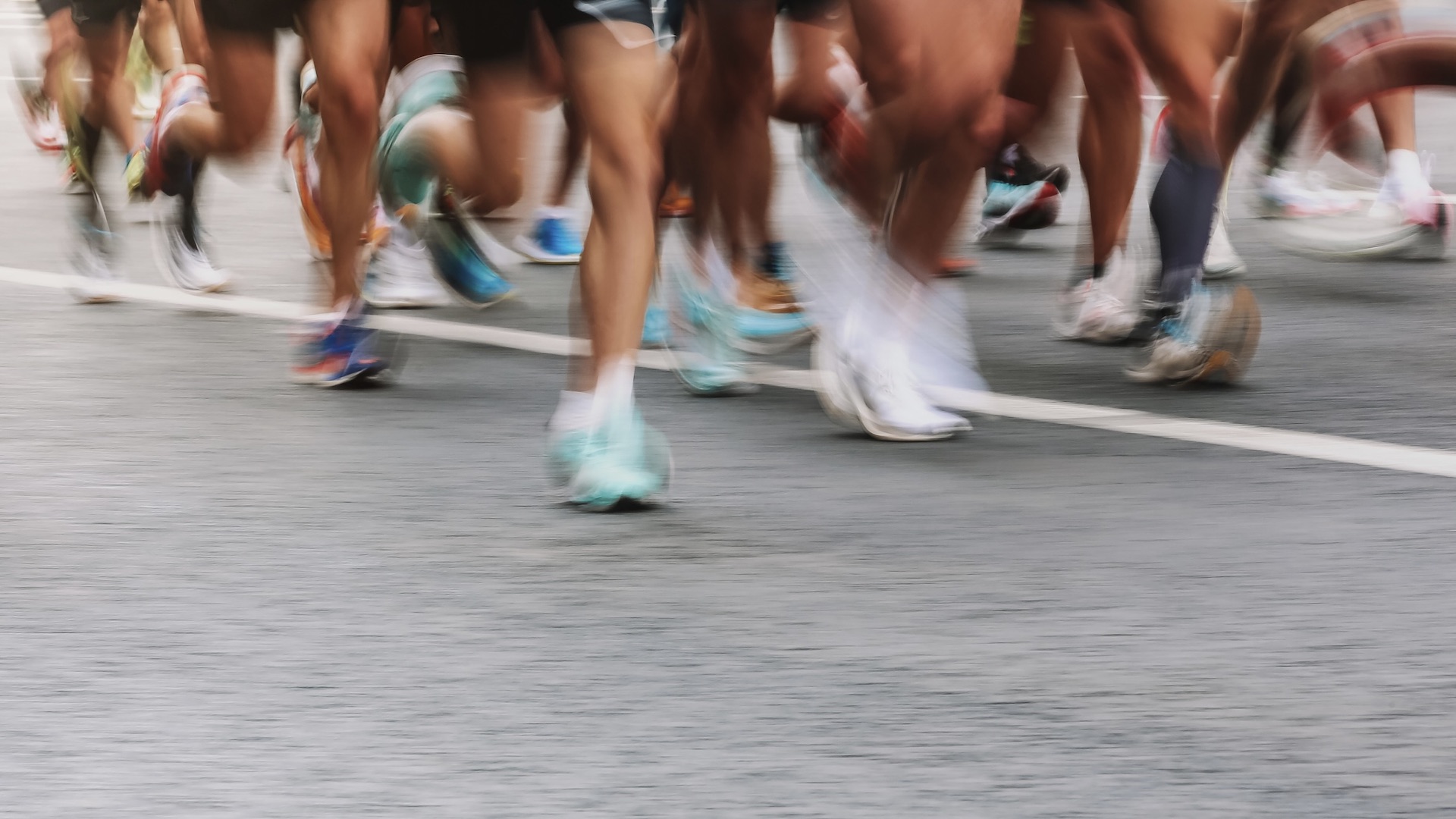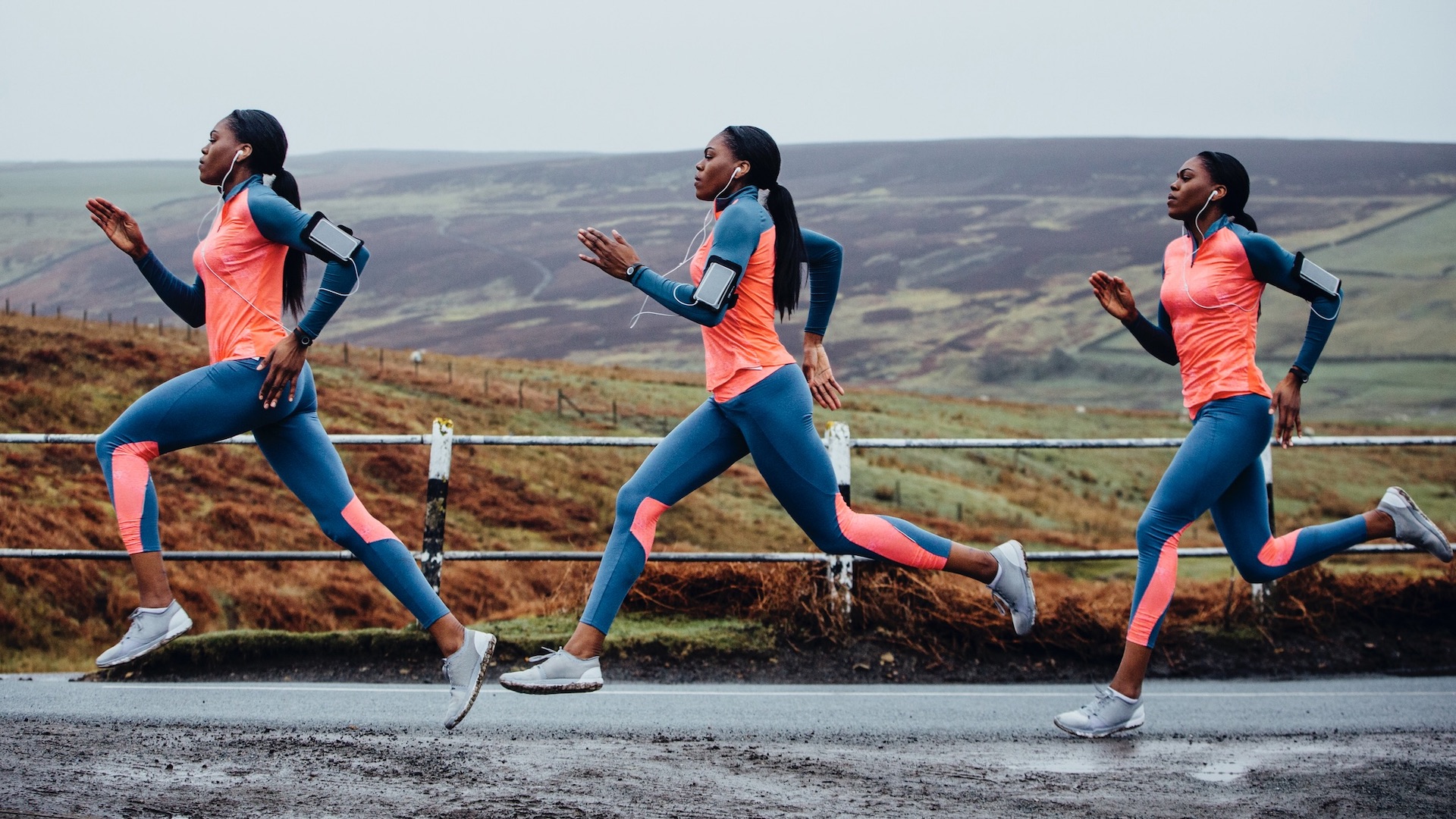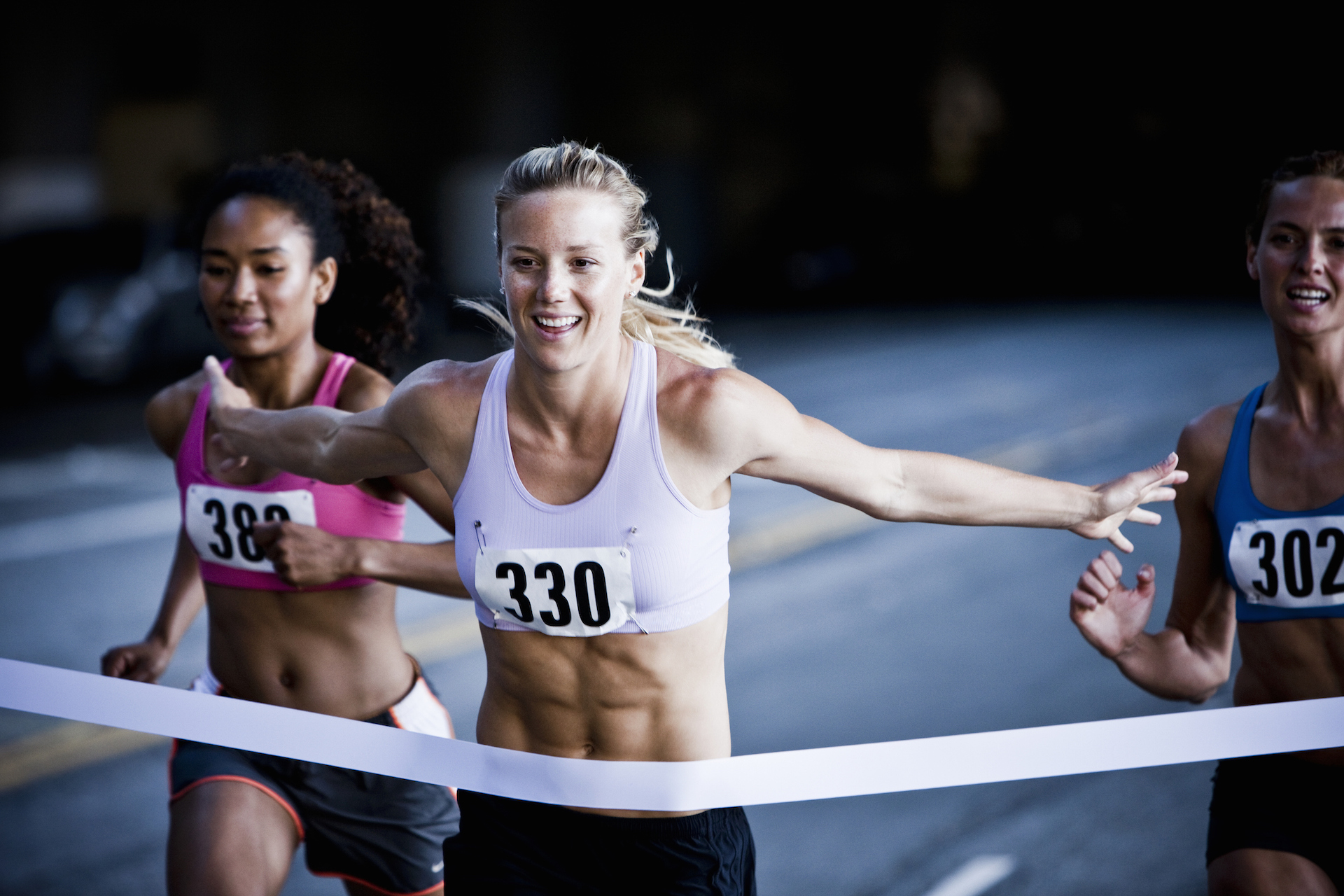
During a race it can be very useful to be able to target a runner ahead and overtake them safely, without putting either of you off your stride.
For example, if you have a specific time in mind, such as running a 3:30 marathon, and the race has pacers, you might try to stay with the pace and then overtake them on the final mile.
Overtaking runners ahead of you can also give you targets throughout the length of the race, or in the final few hundred yards of a race. By looking ahead and seeing a runner ahead of you, then aiming to overtake them, you will be more likely to increase your pace to do so. Likewise, if you have a rival who you would like to overtake, it is a good idea to employ a strategy to achieve this.
There are also some potential pitfalls to be aware of. We asked a range of experts for their tips for overtaking when running a race.

Patience and tactics
Personal trainer Ben Jenks, who also works with Powerlifting Technique, advises patience when hoping to overtake another runner.
He says: “When looking to overtake a competitor, gauging their pace and your capacity is crucial. Try not to over-exert yourself too early by trying to jockey for position.
“First, you need to get a sense of their cadence and breathing patterns before making a move.
“It’s also a good idea to plan overtaking for straight sections of the route or downhills, where you can see the terrain ahead.”
Ben also recommends that you do not sacrifice your running form simply to overtake. He says: “Shorter strides with faster turnover are better than overstriding to pass another runner.”
His biggest tip is that “most importantly, you should run your own race and don't let anxiety about position ruin your pacing and endurance".
Ben adds: “Stay energised with consistent fuelling and hydration, maintain good for, and your overtake opportunities will naturally arise. You should trust your your training.”

Training tips for overtaking
Fran Bungay, head coach for Goal Specific Coaching, makes the point that personal fitness will affect your ability to overtake.
She says: ”There are a number of factors that need to be considered when overtaking in races and there is no one-size-fits-all approach because we are all different.
“It depends on how accustomed each runner is to switching from an aerobic to an anaerobic system when racing, as well as your balance between fast twitch, slow twitch muscles, your fitness levels and your mental resilience.
“It’s also important to consider how well you know the race course in terms of terrain and whether you know the strengths and weaknesses of your opponents, if you have particular people you want overtake.”
Fran has outlined several strategies that runners can consider when training and then racing.
"Firstly, understanding your own body and pace awareness is paramount," she says. "Using your watch to gauge pace and differences in pace is an excellent tool, but your should ensure in training that there are times where you run based on RPE [rate of perceived exertion].
“Listening to your breathing and how your body responds to running at various paces will be helpful when racing because then you will better understand how you are feeling, whether you can push harder and what you can sustain at given points.
“For example, a training session that is fantastic for practising a surge in pace in a race is a push-pull session. This is where you run just below a sustainable threshold and push just above it for periods of work.
“Repeating this session in training, either guided by your watch or by feel, will tell you a lot about your own pace awareness and what you can sustain at given paces. These types of sessions will also give you the confidence that when you have to push past a competitor, you can still return to that threshold pace.”
Fran further explains that, tactically, the race distance will have an impact on overtaking decisions. She says: “The shorter the race, the more risk you can probably take in pushing beyond your aerobic threshold for short periods of time to overtake.
“However, too much of this when you are running a marathon, and you are likely to suffer the consequences. In longer distance races, patience plays a really important role.
“If you are gaining on another athlete, hold your pace and in time you will reel them in.”
Point-by-point overtaking tips
Alanna Kate Derrick is a personal trainer, running coach and Brazilian Jiu-Jitsu practitioner working with Gold BJJ. She offers a useful list of points to remember when overtaking in races.
Pacing is king
Assess honestly: Before you even think about overtaking, be realistic about your sustainable pace. Burning too much energy early can backfire later in the race.
Small gains: Focus on gradually reeling in the runner ahead, maintaining a slightly faster pace. Think tortoise and the hare because consistency often wins out against bursts of speed.
Know the course: Hills and curves are prime passing opportunities. Use them to your advantage by picking up speed on inclines or surging around corners.
When to pass (and when to hold back)
The long game: In marathons and ultras, conserve energy early on. Passing in the initial miles can be tempting but often leads to burnout.
Mid-race surge: For 5Ks and 10Ks, the middle miles are often where the mental game gets tough. This is a good time to capitalise if you have energy to spare.
The power of drafting: Drafting behind another runner for a short time conserves energy. Time your pass right when you break away – they'll feel demoralised and you'll get a boost.
The pass itself
Be decisive: Once you commit, go for it. Hesitation signals your move and allows your competitor to adjust their pace.
Shoulder check: Make a quick glance back to ensure nobody is making a move on you.
Don't fade: Maintain that slightly increased pace for a good distance to create a gap – don't let them catch back up.

Find the space to overtake
When running on trails, experienced ultra runner and coach Ian Stewart makes a valuable point, too. Ian, of Trail Running Scotland, says: “It’s important to give yourself space to safely overtake on trails.
“Unlike when cycling, there is little benefit to be gained from running immediately behind another runner and, in fact, the opposite can be true.
"On technical ground you lose the ability to see the ground with enough time to choose the easiest terrain and make adjustments. Even if you are hoping to overtake, it is better to give yourself a few meters of space so that you can cover the terrain efficiently, then scan further ahead for places where the trail widens, or you can take a better line to overtake the runner ahead.”
Conclusion: how to overtake when running in races
Fran, who is also part of the Training Today App team, underlines that for a successful race outcome, the most important aspect is to run your own race.
She says: "In the end, the best option for an individual in any race of 5k or above, unless perhaps you are an elite athlete, is to make a plan for how you want to run the race and try to execute that plan without influence from the action of other runners.
“In the end, you can only have control over what you do as an athlete and there is a lot to be said for even pace running.”







